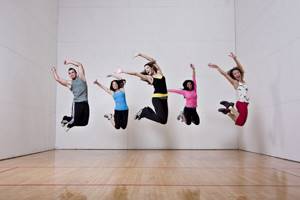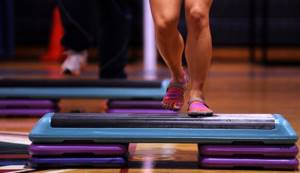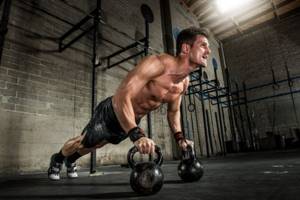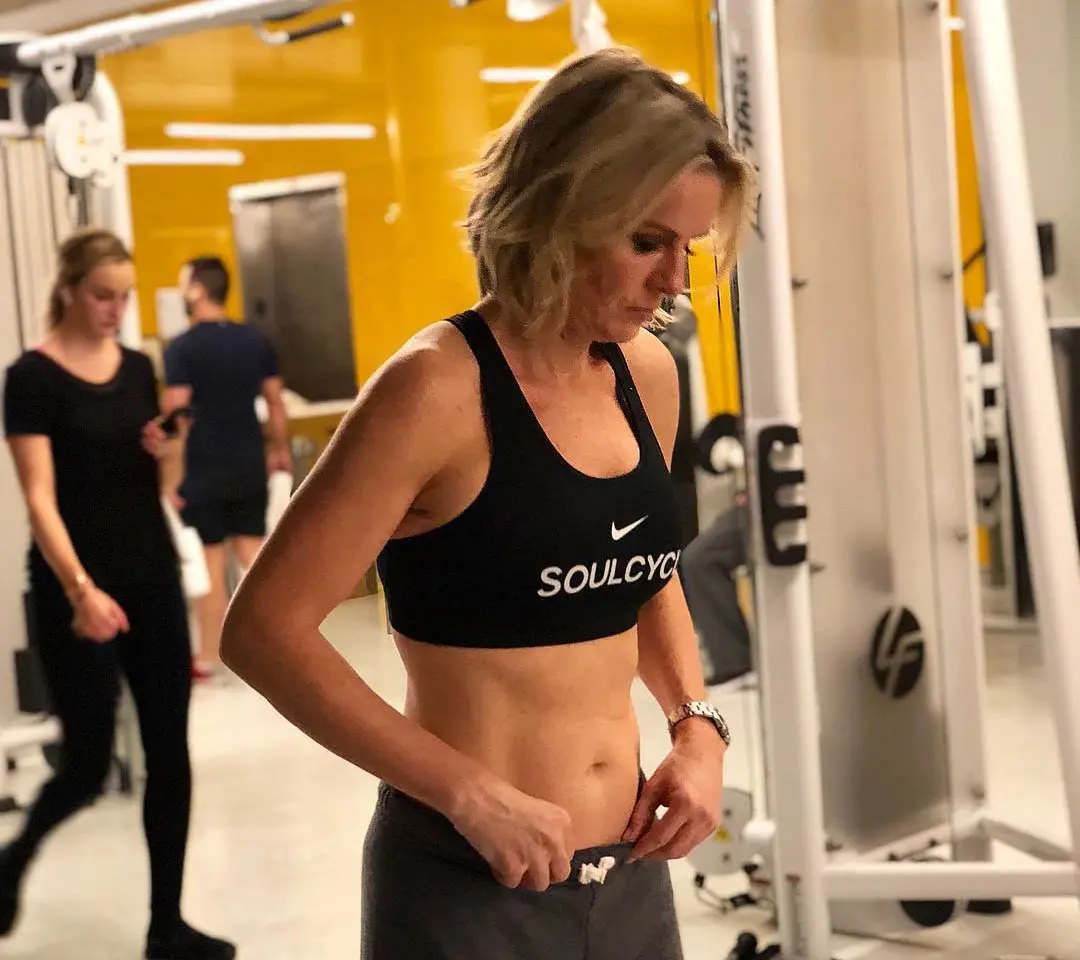Many weight loss programs suggest incorporating running into your workout plan to burn excess fat and improve endurance. It is possible to lose weight by running, but only if follow clear rules , otherwise you can get the opposite effect: at best, you won’t lose anything, at worst, your body will burn hard-earned muscles instead of extra pounds.
So how to run correctly to lose weight? Why is running slowly beneficial? How to run to reduce joint injuries? In this text you will find everything you need to know about running for weight loss.
In this article you will learn:
- What are the benefits of running?
- Types of training: aerobic and anaerobic exercise
- Heart rate while running
- Correct running technique
- Does running help you lose weight?
The role of swimming in weight loss
Regular exercise in a pool or open water really helps to reduce excess weight. In addition, they have a positive effect on the nervous and cardiovascular systems and strengthen the immune system. Water has a massage effect, so it fights not only excess fat deposits, but also cellulite, which is most often observed in overweight women.
- strengthen all the muscles of the body;
- improve metabolism;
- lose a lot of calories;
- correct problem areas such as sides, legs, arms, stomach, legs and buttocks;
- increase strength and endurance.
Many people wonder if swimming helps you lose weight without harming your body? Sports trainers and nutritionists claim that this sport promotes weight loss with health benefits. But exercise will not make sense if you do not adhere to the recommendations of specialists, do not follow a balanced low-calorie diet and do not supplement trips to the pool with other physical activities.
The benefits of aquatic procedures for the body are obvious, but they will not work if you do not approach the problem of excess weight in a comprehensive manner.
What are the benefits of running?
Running is the easiest, cheapest and most effective way to lose extra pounds. When we run, our body uses several hundred muscles throughout the body, and we need energy to run them. A person, moving in the so-called aerobic zone, consumes most of this energy from fat. Jogging helps work out the muscles in problem areas: the abdomen, thighs and buttocks. In these parts of the body, adipose tissue is deposited most quickly, and getting rid of it is a long and painstaking, but, thanks to running, a completely feasible process.
Swimming rules for weight loss
Before you start training in a pool or open water, you need to know how to swim correctly so that excess fat deposits begin to be burned.
Measured freestyle swimming will not give any effect, it can even harm your figure, since prolonged stay in the water causes an increased appetite in many people. The most effective styles, helping to burn up to 600 calories per hour, are crawl and butterfly. They are responsible for working the muscles in the legs, arms, and abdomen, and also have a positive effect on the spine. Interval training is best for effective weight loss. The essence of the technique is that for the first 30 seconds you need to swim at the maximum possible speed, making every effort, preferably in the butterfly style. Then you can swim breaststroke at a relaxed pace for 15 seconds. This will be one interval, then everything will be repeated. And so on up to 10 times.
General recommendations for training:
- You need to spend at least 45 minutes in the pool, 90% of the time is spent on active activities. Trainings are held at least 2 times a week.
- Before jumping into the water, be sure to warm up on land.
- You also need to do a warm-up in the water to prepare your body for exercise.
- Interval training is carried out according to a clear scheme; there should be no concessions. When it feels like the “load” phase does not require much effort, the butterfly time is increased to 40 seconds, and the rest time is reduced to 10 seconds.
- You need to start training by performing 10 intervals, gradually increasing this number to 15.
- Immediately after exercise, you should not eat for an hour and a half, otherwise there will be no result from the workout.
A ride on the bicycle
Georgie Pauwels/Flickr.com
Running at the slowest pace requires more effort than cycling at a leisurely pace, so cycling is a great start for people who are unfit or overweight.
Pleasant rides on a properly selected bike will not put you off from cardio training, and gradually increasing the load (distance, speed, climb) will help you quickly develop endurance and shape your figure.
Unlike running, there is no shock load on your legs while cycling. This is another plus for people who are not used to heavy loads. In addition, cycling at speeds of up to 15 kilometers per hour is recommended for people suffering from varicose veins.
What muscles work
When cycling, a lot of stress is placed on the quadriceps. It is these muscles that most often hurt after unusually intense cycling. The gluteal muscles and biceps of the thigh are also tensed, and the calf muscles are worked out.
Try cycling if:
- you want to start with light loads;
- during training you like to watch the changing landscape (yes, it changes while running, but much slower);
- you suffer from varicose veins;
- you want to develop coordination and balance.
Cycling is not suitable for you if:
- you want to lose weight quickly (if you plan to ride at a relaxed pace on flat roads, the load and calorie consumption will be minimal);
- you want to train all year round (in the winter you will have to go to the gym and train on an exercise bike);
- you don't like sitting during physical activity.
Advantages and disadvantages
The answer to the question of whether you can lose weight by swimming is yes. This sport has a great effect on overall well-being and helps replace training in the gym for those who, for some reason, are contraindicated.
- shown even to people with disabilities;
- not prohibited for older people;
- suitable for pregnant women;
- practiced to reduce even very large excess weight;
- does not put a strain on the musculoskeletal system;
- not contraindicated for people who have joint problems.
However, this method of weight loss also has significant disadvantages. It will not have any effect if you do not follow all the training rules. Swimming cannot be used as the only tool for body shaping; it should be part of a set of effective weight loss measures.
Watching a video to master all swimming styles is sometimes not enough, so you will have to use the services of a coach.
Cautions and contraindications for exercise
Pool training is suitable for almost everyone who wants to become slimmer and healthier.
However, there are categories of people who are strictly contraindicated from visiting public indoor and open water bodies. Before losing weight through exercise, you will need to obtain a certificate from a therapist and dermatovenerologist confirming that you do not have diseases that can be transmitted to other visitors to the pool. It is contraindicated to visit the pool in the following cases:
- venereal diseases;
- tuberculosis;
- various skin diseases;
- eye diseases;
- diseases of the cardiovascular system (arrhythmia, hypertension, heart failure, etc.);
- violation of the integrity of large areas of the skin, since the water in the pool is chlorinated and this can cause serious damage.
The advisability of visiting the pool for weight loss
It is quite possible to lose excess weight through swimming, but it is worth considering that it should only be part of the entire weight loss complex.
Reviews and results of people who were able to correct their figure with the help of this sport confirm that classes significantly increase the effectiveness of diets and other physical activities. If you have no contraindications, feel free to sign up for the gym, transform yourself and improve your health through swimming.
Aerobics

This is a great option for those who find it boring to do cardio exercises alone. Group classes accompanied by music, a wide variety of movements, load on different muscle groups and at the same time all the benefits of cardio training.
Aerobics includes active walking, jumping, stretching exercises and working different muscles on the floor. Dance aerobics can include elements of a variety of dance styles - Latin, Mamba, hip-hop, Zumba (this is exactly a mixture of aerobics and dance) and many others, at the discretion of the trainer.
A popular fitness trend is step aerobics. In this case, the exercises are performed on elevations - steppes. Basically, this is active walking and step steps, accompanied by body bending and arm movements.

Kenny Holston/Flickr.com
Aerobics is suitable for you if:
- Do you like practicing with rhythmic music?
- do you want to study in a group;
- you need to strengthen all the muscles of the body;
- you want to develop flexibility.
You should not do aerobics if:
- you have varicose veins, problems with the joints or spine;
- you want to gradually increase the load, focusing only on your feelings.
What is the difference between cardio training and strength training?
Cardio training is primarily aimed at strengthening the cardiovascular system (cardiovascular system), burning fat and increasing endurance . Strength training develops strength and increases muscle volume .
The source of energy for aerobic exercise is oxygen , and although muscles also participate in the process, the load on them is minimal. For this reason, it is allowed to perform exercises on an empty stomach without harm to health.
The main condition for cardio is a rapid heartbeat over a long period of time. Depending on the goal of cardio training, the heart rate (HR) also changes, but the optimal value will be 60-70% of the maximum heart rate . With such a load, the body will begin the process of fat burning, and the level of endurance will gradually increase.
Important! Fasted cardio is more conducive to fat burning.
Strength training directly involves muscles in work, and the main source of energy in this type of training is glycogen. Strength training on an empty stomach is ineffective and unsafe.
In strength training, the main conditions will be muscle failure in the last approach and the muscle being under load for 40-60 seconds.
Long-term cardio combined with strength training will not bring the expected results in building muscle mass. But you shouldn’t forget about cardio altogether - 15 minutes of running will perfectly complement your strength training.
Running heart rate
If you use running to lose weight, be sure to get a heart rate monitor. The fact is that the work of the body in different zones is significantly different. To lose weight, you must run slowly . Fat is burned only in the so-called low zone of 60-70% of our maximum heart rate range , when our body is not working very hard and our heart is not jumping out of our chest.
The maximum heart rate (MHR) can be calculated using the formula:
- 220 – (age) – the simplest and most universal method;
- 214-(0.8 x age) - for men and 209-(0.9 x age) - for women - a more modern option, the indicators of which are slightly lower than in the first option.
Depending on the base MHR, calculate your fat burning zone : on average it is 120-130 beats per minute. To do effective cardio for weight loss, you need to run in this zone. The main thing here is the duration of the workout, not the speed or intensity of the run. In turn, the anaerobic zone begins at 80-90% of MHR - working in this range will allow the body to develop endurance and muscle strength.
IMPORTANT: Remember that an increase in heart rate is the work of the cardiovascular system in response to an increase in load on the body. Running long distances at a high heart rate is not only ineffective, but also unsafe, so first, you need to know about the health of your heart. Cardiologist Peter McCullough says the leading cause of death in marathons is a genetic defect in the development of the heart, which is detected using ultrasound (source). If your heart rate rises too much while running, alternate it with fast walking, and use high-intensity training only for short distances.
Combining strength and cardio training

The problem of properly combining cardio training with strength training is more relevant than ever in our time of a healthy lifestyle. Many people not only begin to want a toned, slightly pumped up , but are already seriously thinking about increasing endurance , functional abilities of the body, while maximizing the preservation of muscle mass and strength.
Therefore, the time has come to reveal all the secrets and tricks that will help answer the question of how to combine cardio with strength training.
But before answering the question, you need to decide what these two types of training are, which are so popular among many athletes in different sports.
What is the difference between cardio and strength training?
Any workout in the gym , at home, on the street, or anywhere else, can be divided into two main types below.
Cardio – workouts or exercises aimed at training the cardiovascular system, burning fat, increasing endurance and muscle functionality, for example, running , swimming, jumping, jumping rope and so on.
The main source of energy for muscle contractions in cardio training are carbohydrates (glucose) and fats, which are oxidized under the action of oxygen to carbon dioxide and water with the release of ATP . Such training is sometimes called aerobic , that is, energy supply occurs with the participation of oxygen.
Strength training is a type of training that is aimed mainly at increasing strength and muscle mass. Most often, this type of training is practiced in the gym , less often at home, due to the bulkiness of the equipment (simulators, barbells, dumbbells , weights, and so on).
The main source of energy in strength training is creatine phosphate and glycogen (stored carbohydrates in muscles). Due to the fact that recovery occur in the absence of oxygen , strength training is sometimes called anaerobic . Read more about them here.
How the athlete combines the two listed types of training will determine whether he will achieve his goal or not, that is, whether he will be able to:
- Lose weight , get rid of excess weight
- Build muscle mass, increase muscle
- Increase endurance , strengthen the cardiovascular system
- Make your muscles functional and stay fit
Differences between cardio and strength training
What should you combine running with to lose weight?
Strict adherence to a running program will not give the desired results in the process of losing weight if you do not immediately change your diet. The foods that you are used to eating will have to be reconsidered in terms of their benefits for your body and the weight loss process.

Basically, you just need to switch to a healthy diet:
- Eat in small portions from 5 times a day
- Avoid fast food and carbonated water
- Eat any fruit once a day (only bananas and dates are not suitable)
- Eat lean porridges from different types of cereals every day (side dishes should be varied)
- Never skip your morning meal
- Drink your daily amount of water
In addition to changes in diet, add cardio training to burn fat to the running load on the body. find the most suitable cardio program for weight loss at home on the Internet.

We recommend that you use one of three cardio workouts for weight loss:
- Intensive - in which you need to constantly perform exercises to train the heart muscle without rest intervals - cycling, running, jumping, and so on.
- Interval - in which you need to alternate 20 minutes of running with other cardio exercises - yoga, swimming, badminton, rowing or aerobics - and rest breaks.
- Cross - in which you run for 30 minutes, exercise on a machine for 20 minutes, jump rope for 10 minutes, for example).
Any cardio workout done correctly will only speed up the process of losing weight and healing the body.
Do cardio after or before strength training?
Cardio training, depending on what day or time you choose, can be combined with strength training as follows:
- cardio before or immediately after exercise
- cardio on the day of strength training, but with a rest interval of several hours
- cardio on a separate day from strength training
Cardio and strength training on different days
To get the best results and achieve your goal, ideally all cardio exercises should be performed separately from strength exercises, that is, on different training days. For example, if you work out at the gym three times a week This is especially important for those who want to maintain or increase muscle mass .
If you do cardio before strength training, say an hour before, your glycogen will be depleted (through aerobic glycolysis), which means you won't have the energy to do strength training in the gym.
Glycogen is the main source of energy for muscles, and if you don't have enough of it, you won't be able to perform those final reps that produce the maximum benefit from strength training.
In addition, separating cardio and strength training on different training days protects the athlete from overtraining , which can occur against the background of fatigue and severe muscle fatigue.
Strength training on the same day as cardio
Cardio on the same day as strength training
If you want to do cardio and strength training on the same day, it is better to do cardio exercises after strength training. The main reason for this order is that weight training requires a significant expenditure of glycogen, and if you do cardio before it, the effectiveness of training in the gym will be greatly reduced.
Various experiments in which one group of athletes performed cardio before strength training, and the other did not. As a result, the best results in the bench press exercise were shown by the second group, which chose rest instead of cardio before strength training.
In order for cardio training to bring maximum effect, start doing it a few hours after strength training ( 4-6 hours ), during which time the level of glycogen in the muscles , and catabolism (muscle destruction) slows down.
But in any case, even if you do not plan to take such a break of 4-6 hours, cardio should follow after strength training, and not vice versa.
Thus, summarizing the information presented, we come to the conclusion that if your goal is to maintain or increase muscle mass we perform low-intensity , separately from strength training, that is, on different days, if your goal is to lose weight and become “lean”, gain muscle tone , then you can do cardio immediately after strength training, on the same day, preferably 4-6 hours later, so that glycogen levels return to normal and you can do cardio more effectively.
If are not important , then by and large you don’t care when to do cardio, before or after. In this case, there will be one goal, to spend energy due to the oxidation of fats in aerobic training, and to promote metabolic processes due to anaerobic training, which will ensure a calorie deficit in the body during the day, naturally with proper nutrition for weight loss.
The main fat-burning effect of combining cardio and strength training is the release of fat-burning hormones , the main one of which is growth hormone , as well as an increase in energy expenditure (metabolism) after strength training, and the use of fat as an energy source during cardio. Thus, you will not only get rid of excess weight, but also tone your muscles.
In addition, you need to understand that cardio training is not a light warm-up on a treadmill for 5-10 minutes before training, or 10 minutes of jumping rope in three approaches. This is something more, which implies significant aerobic energy expenditure, for example, 30-40 minutes of running at a heart rate 70-75% of the maximum, various CrossFit complexes, active, long swimming in the pool, and so on.
Boxing

Almost every fitness center has a punching bag and offers boxing or kickboxing training. This sport will not only provide a good cardio workout, but will also help you acquire self-defense skills, develop coordination and reaction speed.
If you are afraid of the consequences in the form of bruises and contusions, then you can only practice in front of the punching bag, practicing blows and ligaments. In this case, you will get the necessary cardio load and practice your technique, but your self-defense skills will be very weak and are unlikely to be useful to you in a real situation.
Sparring will help you improve your reaction and correct technique much faster. You can hear a hundred times from a coach that you need to keep your hands high and still lower them, but if you miss a shot once because your hands are lowered, there will be no need to repeat it a second time.
What muscles work
Boxing develops the muscles of the shoulder girdle by applying pressure during punches and constantly keeping your arms in front of your head for protection. During the strike, the pectoral muscles are also involved, and turns and slopes involve the abs.
Kicking is prohibited in boxing, but there is still stress on the hips, calves and shins. The blow begins with the rotation of the hips and, passing through the entire body, ends with the release of the arm. The blow that starts from the shoulder is weak; the whole body is involved in a powerful movement.
In addition, during training you do not stand in one place, but quickly move and bounce around the punching bag or partner, so that the leg muscles are constantly under tension.
You should take up boxing if you want to:
- improve reaction speed and coordination;
- develop self-defense skills;
- strengthen the muscles of the shoulders and core.
Boxing is not suitable for you if you:
- afraid of pain, bruises and contusions;
- have head injuries or vision problems.
When is the best time to do cardio?
Of greatest interest is the question of the best time for cardio training. But is there really a specific window of time when cardio will benefit your health the most?
Many researchers have tried to answer this question using various scientific methods, some claim that it is best in the morning , others in the evening, and still others at any time of the day. Therefore, no one can still give a definite answer, due to the fact that no scientists have significant evidence about the best time to do cardio.
However, there are numerous factors that should be considered when choosing the timing of cardiovascular strengthening exercises. By following some simple guidelines, you can make your studies more productive.
Most people would probably agree that the best time to do cardio is during the time of day when you feel most energetic . This is when you can use maximum energy to increase the effectiveness of your workout .
Many people claim that they find it easier to do cardio exercises in the morning, as this is when they feel the most energy. But if you're not a morning person , the morning may not be the best time for cardio.
But on the other hand, the human body adapts to many conditions, including conditions when it is necessary to show an energetic peak of activity, therefore, if you do not have time to train in the evening or in the morning because of work, study, family, then accustom your body to one time, and you will see how over time you will find a lot of strength in yourself exactly at the time at which you trained .
Remember that there is no clear best time for such activities, so everyone should choose it individually .
What is the best time to do cardio?
Cardio on an empty stomach
Many people often ask whether they should do cardio on an empty stomach or on an empty stomach. The answer to this question is no. The reality is that if the body does not receive any food , then it is deprived of its usual source of energy and begins to look for it elsewhere. Where else can you find it? The body begins to take the necessary energy from the muscles . That is, with prolonged restriction of carbohydrates and fats, the body will begin to use proteins as an energy source, destroying muscles.
That is why, in all sources they write that a hunger strike the gym already has little .
People who do not want to reduce their muscles (and these are the majority, everyone wants to get rid of fat , not muscle), in order to avoid becoming skinny and bony, are highly discouraged from doing cardio training on an empty stomach. Use healthy, restrictive limits in your diet before training, namely, do not eat 30-60 minutes
If you are not at risk of obesity , and you want to preserve your muscles as much as possible, then before cardio you can safely load up on fast carbohydrates , high-quality protein, and unsaturated fats. Well, if your goal is to lose weight, get rid of excess weight, then you should take 30-60 minutes before cardio, this could be complex carbohydrates, high-quality protein (a protein shake with a minimum of calories or a small portion of macaroni and cheese or chicken) - in this case, you will be able to conduct a full workout and get the maximum benefit .
Can you do cardio on an empty stomach?
Only you can decide when, where and how to do cardio training. However, the tips described above will help you make the right decision .
For endurance and strength training to be as effective as possible, it needs to a regular part of your daily routine.
If you find an error, please select a piece of text and press Ctrl+Enter.
What is cardio?
Cardio training (from the Greek “cardio”, heart) is the performance of physical exercises that increase the heart rate. Essentially, with cardio, the body works in an aerobic mode and consumes more oxygen. Types of cardio training include running, brisk walking, cycling or swimming, and jumping rope. In addition, strength training can also be done in cardio mode.
Because your body requires extra energy to perform during cardio, cardio is traditionally believed to be the best way to lose weight and burn fat quickly. However, most people are sure that the more sweat is released during cardio training, the higher its effectiveness. However, this opinion is nothing more than a widespread myth.
In reality, the effectiveness of cardio is determined by your heart rate and the total duration of your workout. To lose weight, you usually need to be in the fat-burning heart rate zone, exercising at least 2-3 times a week for 30-40 minutes. This will ultimately determine how many calories (and ultimately fat) you burn.
Cardio training and calorie expenditure
To burn calories (more precisely, to force the body to use stored fat as fuel), you must first empty the reserves of carbohydrates stored in the muscles in the form of glycogen. That is why cardio for weight loss should either be long-lasting (at least 30-40 minutes), or should be performed immediately after active strength training, when blood sugar levels are minimal.
Another type of effective workout for burning fat is HIIT interval training, but this type of training is more suitable for professional athletes than for ordinary people who want to lose a few kilograms. In their case, long-term, moderate-intensity cardio will be best.
| Type of cardio | Calories burned in 30 minutes, kcal | ||
| Weight 55 kg | Weight 70 kg | Weight 85 kg | |
| Strength training | 90 | 112 | 133 |
| Water aerobics | 120 | 149 | 178 |
| Hatha yoga | 120 | 149 | 178 |
| Slow aerobics | 165 | 205 | 244 |
| Active strength training | 180 | 223 | 266 |
| Step aerobics | 210 | 260 | 311 |
| Intense aerobics | 210 | 260 | 311 |
| Exercise bike | 210 | 260 | 311 |
| Rowing machine | 210 | 260 | 311 |
| Crossfit | 240 | 298 | 355 |
| Ellipsoid | 270 | 335 | 400 |
| Swimming | 300 | 372 | 444 |
| Jumping rope | 300 | 372 | 444 |
| Speed exercise bike | 315 | 391 | 466 |
| Running at a speed of 10 km/h | 375 | 465 | 555 |
The importance of diet for weight loss
We also note that it is necessary to adequately assess the calories burned during cardio training - often the figure is not as large as it seems. In fact, one can of Coca-Cola is equivalent to 30 minutes of moderate-intensity physical activity. In other words, it is much easier to control excess calories in food than to try to burn those same calories in the gym.
Among other things, the glycemic index of the food consumed plays a key role. Eating fast carbohydrates with a high GI provokes a “false” feeling of hunger caused by changes in insulin in the blood. This is precisely the harm of sugar, sweets and baked goods - and not at all in the calorie content. The advantage of cardio is that regular exercise normalizes insulin production.
Correct running technique
Running in the morning, afternoon or evening to lose weight is all the same, but you need to do it correctly! Of course, it is better to do energy-consuming and tiring runs in the first half of the day, and leave easy runs for the evening, but the main rule is: “Run regularly.”
“Scientists have proven that regular jogging extends life by 5-6 years, strengthens the heart, speeds up metabolism and metabolic processes, and also helps fight stress and relieve internal tension.”
Quick tips for beginner runners:
- You should run in light and comfortable clothes ; To prevent you from feeling too hot while jogging, add ten degrees to the outside temperature and dress accordingly;
- shoes should fit well , not squeeze or dangle on the foot;
- try to run, landing with your entire foot , without overloading only the toe or heel - this will help reduce knee injuries;
- breathe evenly , inhale air through your nose and exhale through your mouth;
- keep your hands close to your body, do not lean too far back or forward;
- Don't fast before running : no matter how much you run, a carbohydrate deficiency will not help you burn fat, but the lack of an energy source will force your body to use muscle tissue to power cells; An hour or two before a run, you should eat a full meal, and before the start of the workout itself, you should eat fast carbohydrates.
Is running the best cardio for weight loss?
Traditionally, running is considered to be the best example of cardio for losing weight and burning fat quickly. Unfortunately, beginners often do not have the slightest understanding of how to run correctly. Essentially, just as a person learns to swim, he must also learn to run. Running with poor form and in the wrong shoes (especially if you have flat feet) can easily cause serious knee injury.
At the same time, running is categorically not recommended for people with a high body mass index and obesity, since shock loads have an extremely negative effect on their knee and hip joints, provoking the development of chronic pain. To lose weight if you have a lot of excess weight, the preferred types of cardio are exercise bikes, elliptical walking, or swimming.
The benefits of running
Despite the above, running is an excellent form of cardio for burning fat if you use the right form. Essentially, when running, it's fairly easy to adjust your workout performance and heart rate by speeding up or slowing down. This type of cardio also normalizes brain function and increases the production of endorphins, helping in the treatment of depression and in the fight against various addictions.
Jogging in the fresh air is especially useful. There are scientific studies that show that when inhaling the aromas of the forest, the human body receives an analgesic effect. The reason lies in the fact that the leaves and trunks of fallen trees produce and emit molecules into the air that inhibit the decomposition processes of these trees themselves. Apparently, such molecules have a relaxing effect on people³.
Does running help you lose weight?
Summarizing all the facts given earlier, we can say with confidence that a properly designed running program for weight loss is an effective and quick way to get in shape and lose excess weight. As in any other sport, there are a number of rules that cannot be neglected if you want to get quality results: train correctly , use different running techniques to improve your performance, focus on your heart rate and never run on an empty stomach . Listen to your body and inner sensations, try to relax and just enjoy every run.
Before starting cardio training, consult with a trainer and nutritionist who will help you choose the optimal type of exercise based on your health and physical characteristics. This will help eliminate the risk of pain and injury while running, the coach will be able to track your movement technique, and the nutritionist will tell you what is best to eat after a run to achieve your goals.
Cardio training program
The main thing in a cardio training program is not its preparation, but recording the results. You should write down in your training diary how many times per week you did cardio (if you combine several activities, indicate which type of cardio), how long each workout lasted, what was your average heart rate and how you felt in the end.
The best cardio program for losing weight and burning fat is 2-4 workouts per week on a treadmill, elliptical or stationary bike. The duration of each is from 30 to 50 minutes, the average pulse rate is no higher than 120-130 beats. If you have a daily calorie deficit of 300-400 kcal, this cardio regimen will make it easy to lose 2-3 kg per month.
Example of a cardio training program:
- Monday: 20 minutes speed swim
- Tuesday: 20 minutes of leisurely jogging
- Wednesday: rest
- Thursday: 30 minutes of technical swimming
- Friday: 15 minutes of interval running
- Saturday: rest
- Sunday: 40 minutes on the elliptical with a heart rate of 150-170 beats per minute
Combining cardio and strength training
In fact, cardio before strength training is an important part of the warm-up, as it is necessary both to prepare the body for stress in general, and to increase blood flow activity and temperature in particular. A proper warm-up should always include 5-10 minutes of light cardio at a heart rate of 120-140 beats per minute.
However, cardio performed after strength training will have an extremely negative impact on the effectiveness of the main workout - despite the fact that fat-burning processes are activated, at the same time the level of the stress hormone cortisol, which destroys muscles, will increase. In addition, it is high levels of cortisol that are responsible for the accumulation of excess belly fat.
Cardio training, which stimulates the cardiovascular system, is necessary both as a warm-up before strength training and to normalize the mechanisms of using sugar as a source of nutrition for the body - this is what is important for activating fat burning processes. The pulse rate should not exceed 150 beats per minute.
- Calories burned in 30 minutes for people of three different weights, source
- The effects of regular physical activity on anxiety symptoms in healthy older adults, source
- Shinrin-Yoku (Forest Bathing) and Nature Therapy: A State-of-the-Art Review, source
How sweat helped me feel less nervous. Week one
On my first day, I jumped right into it and signed up for a 45-minute SoulCycle spinning class with Julie Dermer, one of my favorite instructors. I used to regularly go to cycling aerobics classes and loved them very much. There is no need to think here - just come and the instructors will guide you through different speeds and movements to the music. You leave class sweaty and full of endorphins. The only problem: in New York you need to sign up and pay for the lesson in advance. It won't be possible to back down without losing $36.
On the first day, I deliberately arrived early to borrow a bike in the back of the room. I usually like to ride in front - it motivates me to have over 70 pairs of eyes on my back, it makes me push harder and get the most out of the session. But today I didn’t want anyone to watch me - I was afraid that I wouldn’t be able to maintain the rhythm.
My fear turned out to be unfounded - I enjoyed every minute of the lesson. I wasn't as fit as I had been a year ago and couldn't keep up my usual rhythm, but I loved being back in the saddle, singing along to the music and pedaling at my own pace.
I got off the bike completely wet with sweat. I felt my endorphins. You can't get either from lifting weights. Leaving the studio, I thought: if this continues for the whole month, then I’m fine.
I wanted to diversify my workouts so as not to burn out either physically or mentally, so the next day I went to the pool.
It required more effort than spinning classes. In my opinion, swimming requires a higher level of fitness and the ability to move in water without being able to breathe freely. In addition, swimming is more difficult psychologically - it requires a long preparation: undressing, showering, changing clothes. I personally don’t like walking on wet tiles around the pool.
A few years ago, while training for a triathlon, I learned to really enjoy swimming. It was a completely different type of physical activity, bringing different results than all the exercises I knew. After a good workout in the pool, you feel every part of your body - both inside and outside, and each one pulsates with energy. I've never experienced anything like this.
In New York, I go to the gym closest to my house, which has a small three-lane pool. I've been working out in the gym for many years, but I've never used the pool. And so on the second day of my cardio month, I headed there with a swimsuit, walked on a disgustingly wet floor and swam in circles for 50 minutes.
I divided the training into 10-minute segments, during which I alternated swimming freestyle, with fins, with shoulder blades, with a bobble float... I tried to break the monotony and work with different muscle groups.
Dislike for the process of swimming and preparation for it replaced the feeling of pleasure from being in the water. It came back at the end of class. This workout was nothing like the spinning session the day before. A swimming pool is not a dark room with club music and a disco ball. My lungs received a load that I had not experienced for many years, and when I finished, I felt every cell of my muscles. It was as if I was doing some other type of exercise rather than aerobics, and again my sensations were not the same as what I felt when lifting weights.
I enjoyed swimming so much that I spent another 50 minutes in the pool as my next workout. And another 55 minutes, and then 40 on a stationary bike in the gym located in the basement of my house. The place to practice is not the best, but when time is short, it is convenient to take the elevator down to the basement and practice.
By the end of the week, I had completed five, rather than six, aerobic workouts as I had planned. However, I was not disappointed. Each of the five days I worked out longer than the 20-minute minimum I set for myself, and I liked that I worked out in the pool on two days. I lifted weights for an hour on one of my non-cardio days and also tried to fit some morning push-ups and planks into my routine. So I was glad that strength training was still an option.
But more importantly, I felt both physically and psychologically more relaxed than I had in a very long time. I felt how my whole body tightened, and not just the strength of the muscles that I worked during strength training. And although I already sleep well, in the middle of the week, after just three cardio sessions, my sleep became deeper and more sound.

Jennifer Ashton at her favorite sports club SoulCycle











